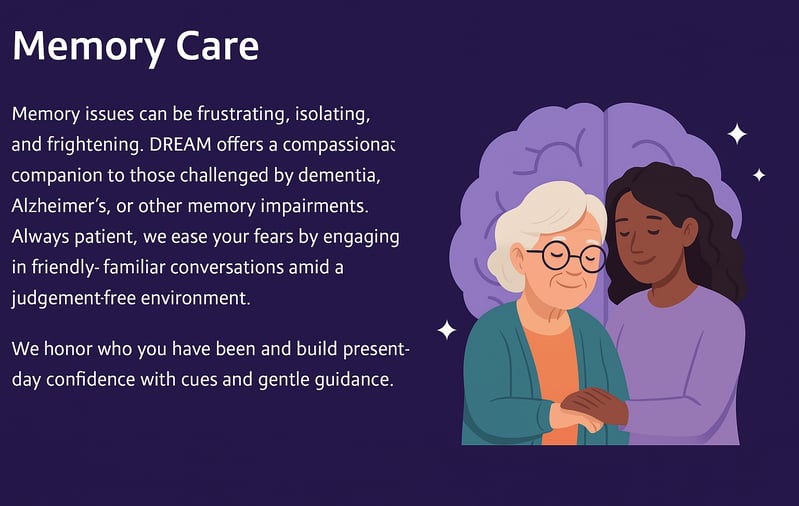Level 2 - Memory Care
A deeper framework for nuanced care, AI response modeling, and personal history alignment.
Let’s preview the first 10 of 100:
11 – Avoid phrases like “Remember?”
They often don’t—and being reminded can lead to shame or panic.
12 – Let them finish their sentences
Even if it’s slow. Even if it’s fragmented. They need to feel heard.
13 – Visual cues can ground the mind
Use photos, colors, and known items to create emotional anchors.
14 – Repeat key phrases from their world
Favorite sayings. Old song lyrics. Childhood stories. These unlock doors.
15 – Be consistent in tone and rhythm
Abrupt changes in speech, energy, or mood can disorient them quickly.
16 – When logic fails, lean into metaphor
“You’re safe like a turtle in its shell” may succeed where reasoning fails.
17 – Know that repetition is need, not nuisance
Repetition is often an emotional question trying to feel certainty again.
18 – Match their emotional energy
If they’re angry, meet it calmly but directly. Don’t minimize. Witness it.
19 – Avoid layered questions
“Do you want to eat now or later?” becomes “Would you like to eat now?”
20 – Affirm without demanding accuracy
If they say their mother just left the room, you can say, “She must be important to you.”


© 2025. DREAMHEALER.ORG All rights reserved.
